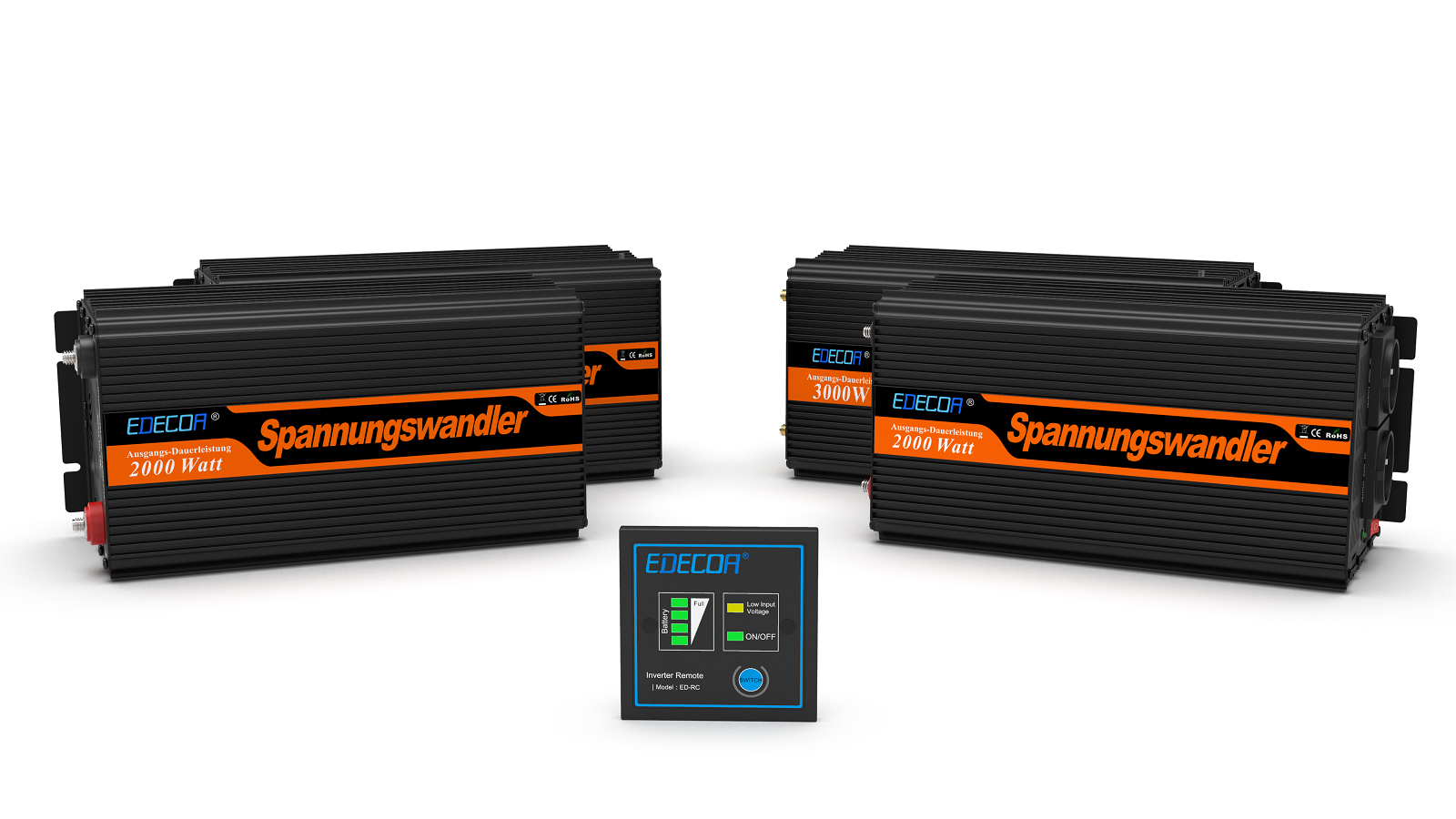EDECOA
Powes up all you need
How to choose the right inverter for an RV?
Installing an inverter in an RV is essential to convert direct current (DC) to alternating current (AC) and meet the power needs of various electrical devices in the RV. Choosing the right inverter is crucial for the power supply of your RV. Here are some key factors to help you select the appropriate inverter for your RV.
- Power requirements: First, determine the devices that need to be powered by the inverter in your RV and their power requirements. These devices may include a TV, refrigerator, air conditioner, oven, etc. Based on the total power consumption of these devices, you can determine the required inverter power. Typically, a regular-sized RV would need an inverter with a power rating of 1000-3000 watts.
It's important to note that inductive load appliances (coffee makers, refrigerators, air conditioners, microwaves, etc.) require a starting power at least three times their rated power. If the starting power exceeds the capacity of the inverter, it may damage the inverter. For example, if a coffee maker requires 300W, it would need an inverter of at least 900W to operate properly.
- Battery capacity: The inverter draws energy from the RV battery and converts it into AC power for devices to use. Therefore, you need to ensure that your RV battery has sufficient capacity to support the power output of the selected inverter. If your RV battery capacity is low, you may need to consider upgrading or adding additional batteries.
- Inverter type: Depending on your usage requirements and budget, you can choose different types of inverters. Pure sine wave inverters provide high-quality AC power and are suitable for devices that require high power quality. Modified sine wave inverters are a more economical choice but may not be suitable for sensitive load appliances.
- Safety features: Ensure that the selected inverter has necessary safety features such as overload protection, short circuit protection, and overheat protection. These features can protect your RV and devices from potential damage or hazards.

How to install and use an inverter in an RV?
Installing an inverter in an RV is a straightforward process:
1. Choose a dry and well-ventilated location.
2. Connect the power source: Connect the positive terminal of the inverter to the positive terminal of the RV battery and the negative terminal to the negative terminal. Ensure a secure connection and use appropriate cables with correct specifications.
3. Connect the AC circuit: Identify the outlets where power is needed and connect the AC output port of the inverter to those outlets. Use proper cables with correct specifications for the connection and ensure a secure connection.
4. Safety check: Before starting the inverter, perform a safety check. Ensure all connections are secure and correct, and check for any potential short circuits or exposed wires.
5. Start the inverter: Once you have ensured that the inverter is properly connected and installed, start it up. Check if the inverter is functioning correctly and supplying the required AC power to your RV.
If you have any questions regarding choosing, using, or installing an inverter, feel free to contact EDECOA customer service team at any time.

Post time: 01-27-2024